How to Identify a Ladder-Backed Woodpecker
Updated: Jan. 02, 2024
Meet the ladder-backed woodpecker. This delightful bird makes its home in the harsh conditions of southwestern deserts.
What Does a Ladder-Backed Woodpecker Look Like?
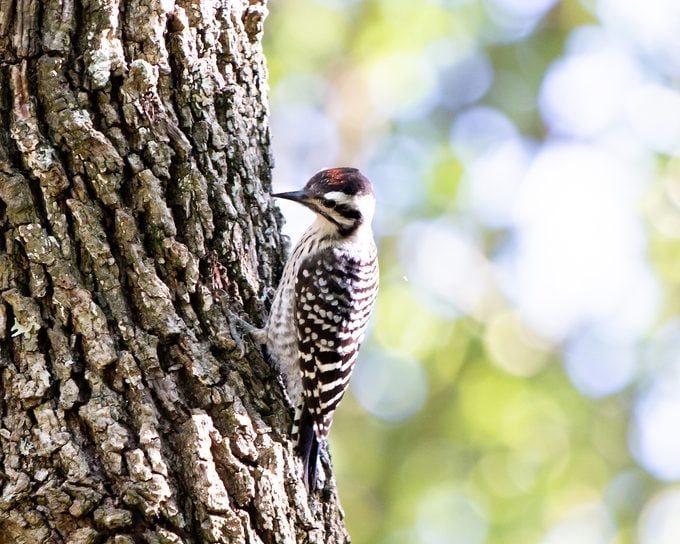
Male and female ladder-backed woodpeckers both feature a “ladder” of white and black coloration on their wings and backs, as well as white and black markings on their breasts and a black stripe running over their eyes. Males have a reddish cap. Females feature black coloration at the top of the head.
This species is similar in appearance to the Nuttall’s woodpecker. However, male Nuttall’s woodpeckers’ red crown appears farther back on its head, and the white stripes on Nuttall’s woodpeckers’ faces are thinner. Interestingly, where their ranges overlap, the two species may interbreed.
Discover 13 types of woodpeckers you should know.
Ladder-Backed Woodpecker Habitat
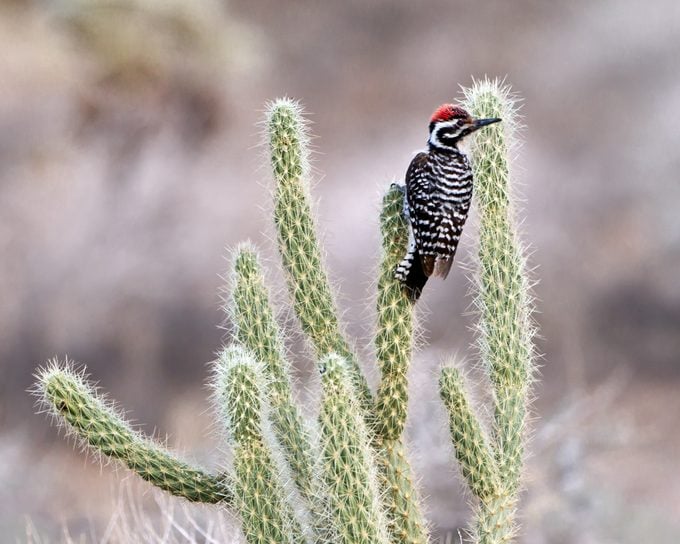
These woodpeckers’ incredible ability to survive the harsh habitat of the desert makes them truly fascinating. Often spotted in dry, unforgiving environments in the southern section of their range, they’re frequently seen on several species of cacti, as well as agave and Joshua tree. In the northern section of their range, they appear in pinyon woods (also home to the pinyon jay).
In the United States, ladder-backed woodpeckers predominantly appear in the southwest. They inhabit most of Texas, the eastern half of New Mexico, and the western and southern halves of Arizona. They’re a common sight in southeastern California as well. Less commonly, these birds are sighted in Colorado, Kansas, Nevada, or Utah.
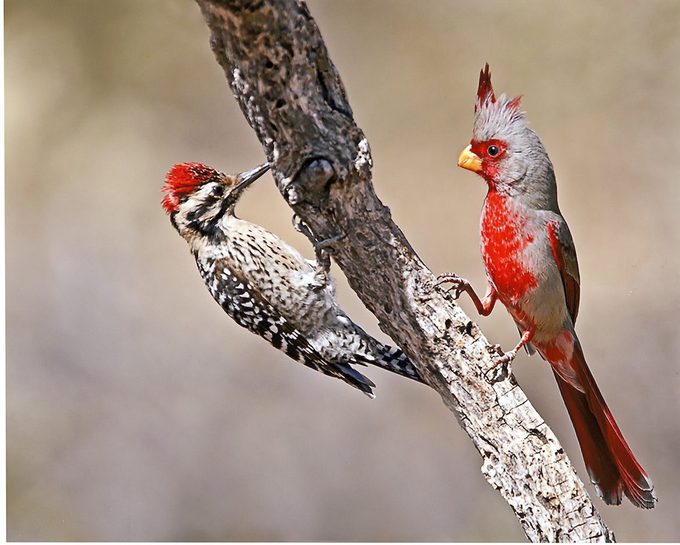
“While photographing wild birds in Arizona, I found this male ladder-backed woodpecker (above) hunting for bugs on a dead branch. Suddenly, a male pyrrhuloxia landed on the same branch. Each seemed surprised to see the other there. After a brief standoff, the pyrrhuloxia flew away,” says Birds & Blooms reader Kelly Walkotten.
Downy vs hairy woodpecker: learn how to tell the difference.
What Do Ladder-Backed Woodpeckers Eat?
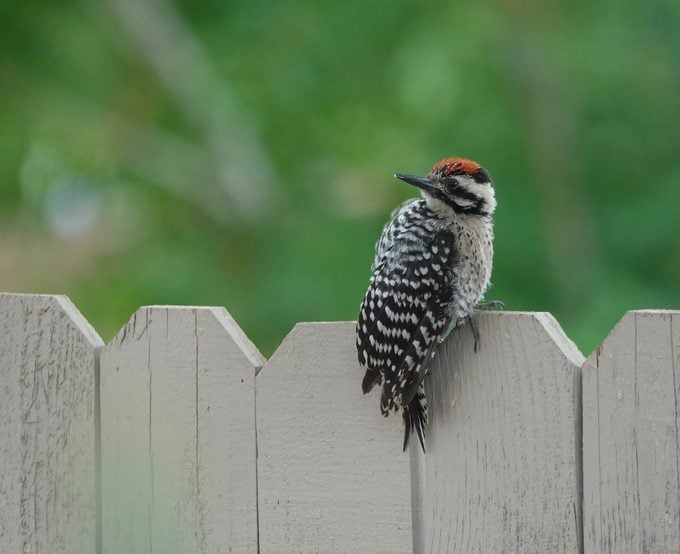
Since ladder-backed woodpeckers eat mostly insects, they’re not as easy to bring to your backyard as typical songbirds. With that said, you can try putting out mealworms for them. Like other woodpeckers, they’ll also eat suet, peanut butter, and black oil sunflower seeds.
They don’t store or cache their food, which sets them apart from other woodpecker species such as the acorn or red-headed woodpecker.
“I had just moved to a rural town in Arizona. Looking out of my kitchen window, I had so many kinds of birds feeding at my feeders that I had to get a book to identify them all. One of my favorite visitors is this ladder-backed woodpecker (above). If you look closely at his shoulder, it looks like it has tiny hearts in the feathers,” says Birds & Blooms reader Leah Woodhall.
Do woodpeckers drink sugar water from hummingbird feeders?
Nesting Habits
Ladder-backed woodpeckers lay two to seven eggs in cavities in large trees. Nests are typically found between 4 and 30 feet off the ground. Both parents incubate eggs for about two weeks, but little research exists to show how many days the baby birds remain in the nest.
What does a baby woodpecker look like?
Calls
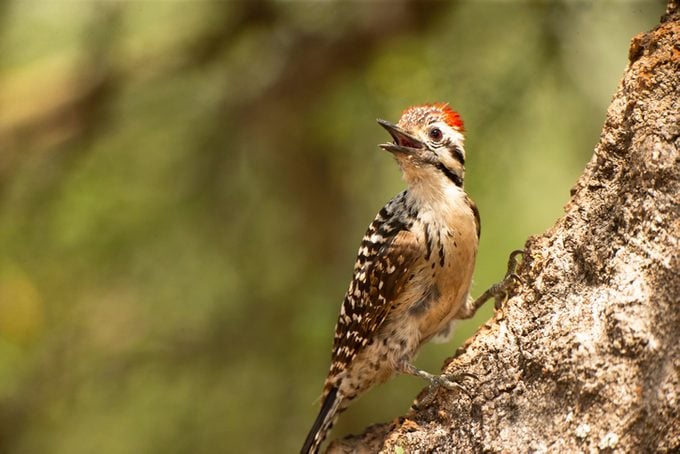
Both males and females use a high-pitched peek call, sometimes to communicate when away from the nest. A rattling call is also heard. As with other woodpecker species, males drum to mark their territory.
Next, find out why woodpeckers peck and how to stop it.




















